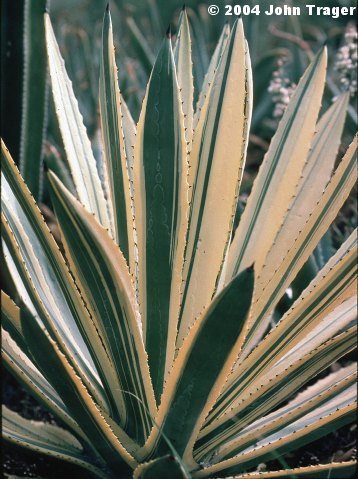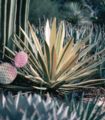A. murpheyi is another bulbil-forming species and one with a long history of cultivation and use by indigenous Americans both for its edible “cabeza” (the carbohydrate-rich stem, roasted just prior to flowering) and for its fiber. Populations are often associated with archeological sites. The variegated form makes a particularly attractive landscape specimen with rosettes of straight leaves beautifully variegated with creamy yellow, to 60 cm across. It is slower than the green form and therefore not as readily available. We started a few bulbils years ago and have been pleased to find that juvenile plants offset at a faster pace than larger rosettes, which seem to exert an apical dominance that inhibits branching. Rooted offsets of HBG 34167, from bulbils collected in 1974 by Rodney Engard, the former director of the Desert Botanical Garden, 8 km S of Barthlett Dam and 3.2 km E of the Verde River, Arizona. This cultivar is here named in honor its discoverer. $10.

Published in the Cactus and Succulent Journal, Vol. 76 (2), March - April, 2004


